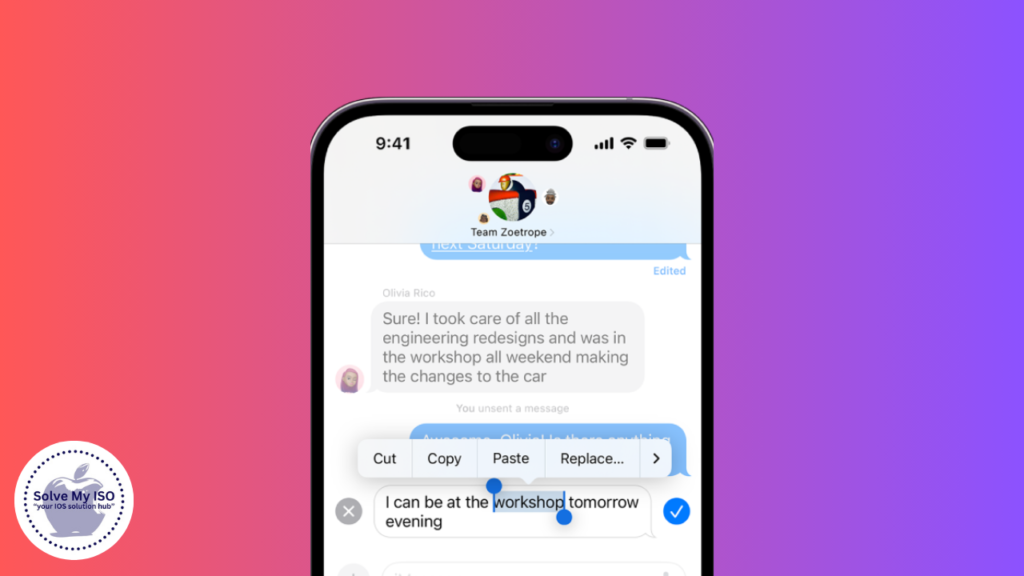Managing messages efficiently is a crucial aspect of using any smartphone, and the iPhone is no exception. Whether it’s for personal or professional communication, ensuring that your messages are sent and received as intended is vital. One common issue that iPhone users encounter is dealing with unsent messages. These are messages that, for various reasons, have not been successfully delivered to the recipient. This guide will walk you through understand, identify, and manage unsent messages on your iPhone, ensuring you stay connected seamlessly to learn how to see unsent messages on iPhone.
Understanding Unsent Messages on iPhone
What are Unsent Messages?
Unsent messages are text messages that remain in the sending phase and do not reach the intended recipient. This scenario can occur in both iMessage and SMS formats. Unlike undelivered messages, which fail to reach the recipient due to issues on the recipient’s end, unsent messages typically fail due to problems on the sender’s side. Common scenarios leading to unsent messages include network disruptions, app glitches, or incorrect device settings.
Common Reasons for Unsent Messages
Several factors can lead to messages not being sent on an iPhone:
- Network Issues: Poor cellular or Wi-Fi connections can prevent messages from sending successfully.
- App Glitches: Bugs or temporary issues within the Messages app can halt the sending process.
- Device Settings and Restrictions: Incorrect settings or restrictions can interfere with the normal message-sending workflow.
Checking Unsent Messages in iMessage
Using the Messages App
Identifying unsent messages within the Messages app involves a few straightforward steps:
- Open the Messages App: Launch the Messages application on your iPhone.
- Locate Conversations: Scroll through your list of conversations to find any that may have unsent messages.
- Look for Indicators: Messages that have not been sent will typically have indicators such as “Not Delivered” or “Sending…”.
- Troubleshoot Issues: Tap on the unsent message and select “Try Again” or follow any prompts to troubleshoot the issue.
Reviewing Message History and Status
Understanding the status of your messages can provide insights into why they weren’t sent:
- Check Status Indicators: Messages in green bubbles are standard SMS, while blue bubbles signify iMessages. Look for status notifications like “Not Delivered”, which indicate sending issues.
- Review Message History: Scroll through your message history to spot any irregularities or persistent issues with specific contacts or threads.
Tools and Methods to save Unsent Messages
Built-in iPhone Features
Utilizing built-in iPhone features can often help manage unsent messages:
- Airplane Mode: Temporarily enabling Airplane Mode and then disabling it can reset your connection and potentially resolve sending issues.
- Drafts and Outbox: Check for drafts or messages stuck in the outbox by navigating through your Messages app and email settings.
Third-Party Apps and Software
If built-in features don’t suffice, several third-party apps can assist in recovering unsent messages:
- Recommended Apps: Tools like Dr.Fone, PhoneRescue, and Tenorshare ReiBoot offer specialized software for message recovery.
- Step-by-Step Guides: Follow the app-specific instructions to retrieve unsent messages. Typically, these involve connecting your iPhone to a computer, running a scan, and selecting messages to recover.
Preventing Unsent Messages
Ensuring Stable Network Connections
Maintaining a robust network connection is essential for message delivery:
- Tips for Stability: Use a stable Wi-Fi connection whenever possible, especially in areas with weak cellular signals. Disable Wi-Fi Assist in your settings if it causes connection issues.
- Wi-Fi vs. Cellular Data: For optimal performance, switch to a reliable Wi-Fi network when at home or in the office. Reserve cellular data for when you’re on the move.
Regular Device Maintenance
Keeping your iPhone in good health can prevent many issues related to unsent messages:
- Software Updates: Regularly update your iPhone’s software to ensure you have the latest bug fixes and improvements.
- Clearing App Cache and Data: Periodically clear the cache and data of the Messages app to prevent it from becoming sluggish or unresponsive.
Conclusion
In summary, managing unsent messages on your iPhone is crucial for maintaining effective communication. By understanding the causes, utilizing built-in features, and exploring third-party solutions, you can ensure your messages are sent successfully. Regular device maintenance and a stable network connection can also prevent future issues. Keep these tips in mind, and you’ll be well-prepared to handle any messaging challenges that come your way. For more comprehensive solutions and assistance with iPhone issues, visit Solvemyios
